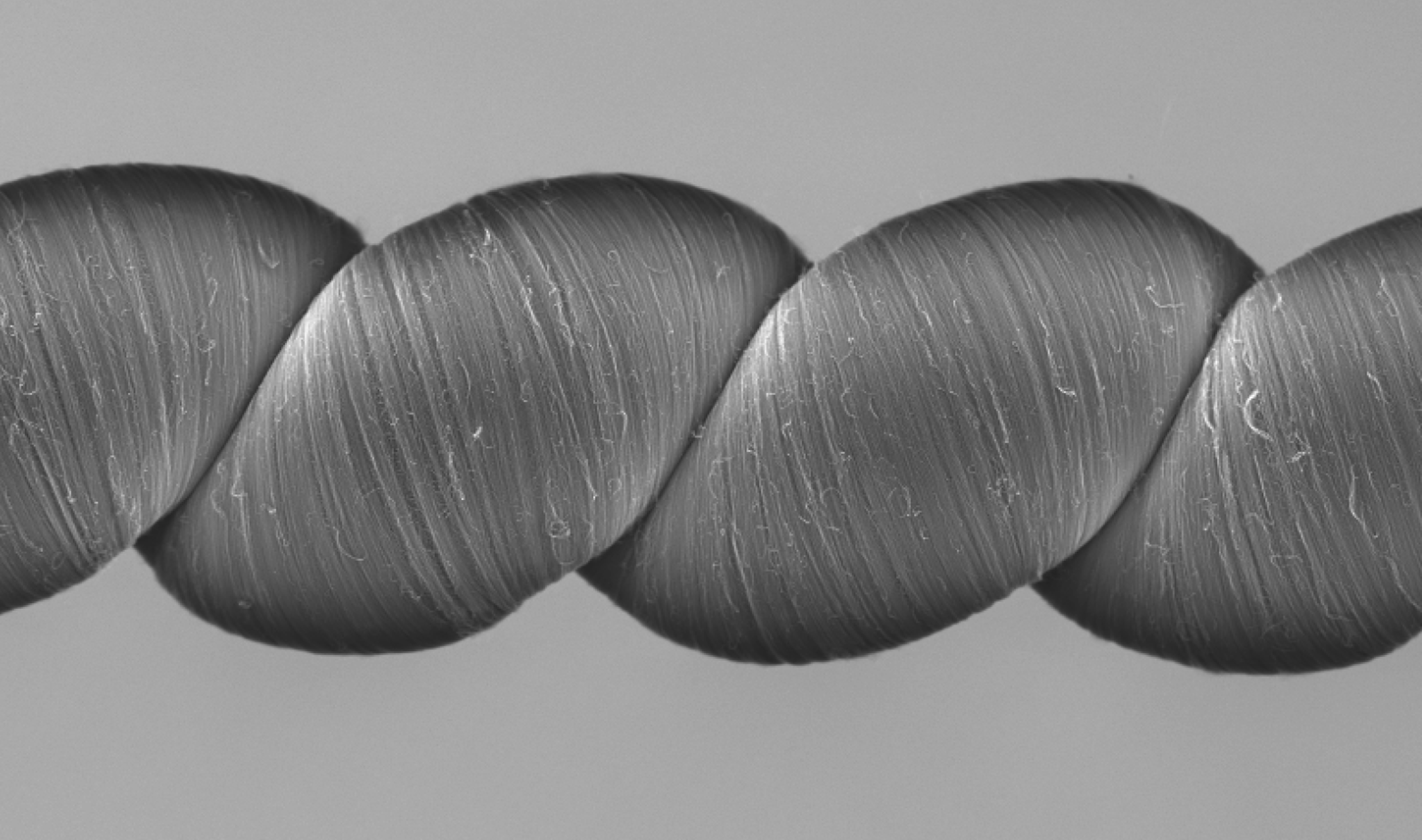Carbon-Nanotube Yarn Twists and Stretches To Produce High Yields of Electricity

Credit to Author: Michael Byrne| Date: Thu, 24 Aug 2017 18:26:45 +0000
An international team of researchers based at the University of Texas at Dallas and Hanyang University in South Korea has developed a new form of energy-harvesting yarn spun from carbon nanotubes. While hardly the first electricity-generating textile, it offers over 100 times the electrical power per weight compared to prior attempts at weavable fibers, according to the materials scientists behind the yarn.
The new material, dubbed “twistron” yarn, is described this week in the journal Science.
The basic high-level view is that this is yarn that can be stretched and deformed to produce electricity. Potential applications include wearable breathing sensors that harvest their own power; generators that harvest power from ocean waves or temperature fluctuations in artificial muscles; and self-powered Internet-of-Things communications infrastructure. The researchers note in a press release that just 31 milligrams of their now-patented twistron yarn could provide enough electricity to send 2 kilobytes of data 100 meters every 10 seconds.
The reason this works is carbon nanotubes. These are hollow cylinders of carbon that are about 10,000 times more thin than a human hair. They’re interesting in large part because of their high electrical conductivity, which can be greater than even copper. What’s more, this conductivity changes depending on a property known as chirality, which is basically how twisted the carbon nanotube is.
To function, a length of twistron yarn must either be submerged in an electrolyte like salt water or it must be coated in it. “Fundamentally, these yarns are supercapacitors,” Na Li, a research scientist at the NanoTech Institute and co-lead author of the study, explained in a statement. “In a normal capacitor, you use energy—like from a battery—to add charges to the capacitor. But in our case, when you insert the carbon nanotube yarn into an electrolyte bath, the yarns are charged by the electrolyte itself. No external battery, or voltage, is needed.”
Twisting the yarn means that its volume is decreased and the electrical charges distributed along the strand are brought closer together. The result is an increase in voltage overall as the amount of energy increases per unit of volume. It then becomes possible to harvest this electrical energy.
Part of what makes the twistron yarn useful is that it can be stretched many times per second while still kicking out high levels of power. “For stretch frequencies between a few hertz and 600 Hz, we could find no other material-based harvesting technology that provides a higher reported peak power or frequency-normalized peak power than our twistron harvesters,” the paper boasts.
In one demonstration of the material’s potential, Shi Hyeong Kim, the paper’s lead author, took a 10 centimeter length of twistron yarn to the beach. Kim waded out into the ocean off South Korea, connected one end of the yarn to a balloon and the other end to a sinker, and let the assemblage rise and fall in the waves. Each wave resulted in a deformation in the yarn of about 25 percent, resulting in a measurable spike in electricity.
The catch lies in scaling the technology upward to a point where such a wave generation scheme would be practical. We’re not quite there.
“If our twistron harvesters could be made less expensively, they might ultimately be able to harvest the enormous amount of energy available from ocean waves,” offered study co-author Ray Baughman in the same statement. “However, at present these harvesters are most suitable for powering sensors and sensor communications.”